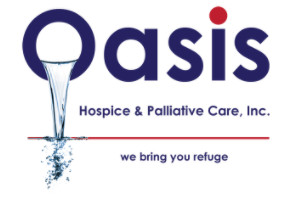Many people are concerned about morphine’s use in palliative care. Morphine and other morphine-related medicines, such as hydromorphone, codeine, and fentanyl, are classified as opioids. These drugs may be used to alleviate pain or shortness of breath during an illness or at the end of life. Patients and relatives are sometimes concerned that painkillers would hasten death. Is morphine used in hospice care?

Morphine is occasionally utilized when a person’s condition is deteriorating and he or she is in the advanced stages of the disease. If the patient is in moderate to severe pain or has shortness of breath, his or her doctor will most likely prescribe morphine. This opioid aids in the person’s comfort throughout the sickness and till death. With or without the morphine, the person declines due to the sickness. There is always a “last dose” when a patient receives regular pain medicine, such as morphine, in the final hours or days of life. To family members at the bedside, the medicine may appear to have caused or contributed to the death, especially if death comes within a few minutes. However, this dose does not result in the person’s death. It is just the last medication administered in the minutes or hours before death occurs naturally. Oasis Hospice is the best-assisted living hospice for your loved ones.
Morphine and other opioids are not known to play a role in the death of a person with a terminal illness. The following details explain why:
- There is no evidence that opioids, such as morphine, hasten death when the appropriate dose is administered to control the symptoms. Indeed, using opioids to alleviate pain or shortness of breath near the end of life may help a person survive a little longer. Pain and shortness of breath are exhausting, and people nearing the end of their lives have few resources. So it seems to reason that addressing these symptoms could reduce the rate of deterioration, if only for a few hours.
- If a person has never received morphine, the first dosages are little. They progressively increase to alleviate the patient’s pain or shortness of breath. The body adjusts to the morphine after a few days of frequent dosages. The patient is less likely to be afflicted by morphine’s most dangerous adverse effect, which is respiratory slowing. To cause injury, a substantial dosage increase over a short period of time would be required. Morphine doses are progressively raised and only as needed to maintain comfort.
- The final dose is the same as prior doses received and tolerated by the patient. When someone cannot swallow, the way the drug is administered may vary. If the drug must be administered via a different method, the dose is calculated to equal the amount previously administered orally.
- There is a distinction between natural death and death from a morphine overdose. When a person has gotten too much morphine, he or she is usually unable to be awakened. The person’s respiration slows and becomes more regular. In a minute, only one or two breaths are taken. The individual also appears to be at ease.
- A person’s breathing becomes shallower and faster than normal in the final hours of the natural dying process. Breathing muscles, like all other bodily muscles, deteriorate. Extra muscles assist when the respiratory muscles are weak. It may appear that the individual is working hard to breathe, but this does not always imply that they are out of breath. The individual’s breathing rhythm frequently becomes erratic, with pauses. A few quick, deep breaths frequently follow these pauses. When a person dies, he or she does not take another breath after a pause.
- These alterations in breathing indicate that the breathing control centre is deteriorating. The individual may appear to struggle to breathe, but this is a natural and normal response.
- We know that morphine is not a factor in the dying process if there are worries about the increased rate and work of breathing, gasping for air, and the person is disturbed. Instead, this signals that the person will require extra frequent doses of morphine to reduce distress.
- Morphine and other morphine-related drugs are frequently used to keep a person comfortable throughout an illness and the dying process.
An article published in the National Center for Biotechnology Information in 2010 examined the appropriate use of opioids (like morphine). They discovered that opioids did not result in respiratory depression.
This was based on a thorough review of available research. In other words, no statistically significant association was discovered between the following:
- dosage of opioids
- dosage modification
- Sedative use
- the date of death
The largest study of hospice patients in North America was among the numerous research examined. As a result, no significant relationship between increased morphine dosage and death was discovered. Even double doses of short-acting morphine did not enhance the risk of death. Morphin increases a patient’s quality of life when used correctly. It can also boost hunger, strength, and activity when used correctly. Controlling pain also enhances social relations by putting patients in a better mood.
Adequate pain management also includes:
- lowers blood pressure
- decreases shortness of breath
- increases oxygen and carbon dioxide exchange (CO2)
- enhances sleeping patterns
- Dosage and Effectiveness
- Morphine is administered in the same dose as hydrocodone by hospice care providers. This is the opioid found in the widely prescribed drugs Norco and Vicodin. For example, two of the most typical Norco doses are 5/325 (5 mg hydrocodone with 325 mg acetaminophen) and 10/325 (10 mg hydrocodone with 325 mg acetaminophen) (10 mg of hydrocodone with 325 mg of acetaminophen).
- Roxanol (liquid morphine) has the same initial dose as one Norco 5/325 pill. The maximum dose for a dropper or sublingual syringe is two Norco 10/325 pills. These are unquestionably not lethal doses.
- Roxanol has a rapid onset of action after sublingual delivery. It starts working within 15-30 minutes and reaches its maximal effect an hour after administration. The drug has a four-hour duration.
- Patients normally do not eat or drink for 15 minutes to guarantee optimal efficacy. This permits the drug to be absorbed completely into the oral mucosa.
- Most hospice care providers, including Parentis Health, begin with the lowest dose possible. This equates to 5 mg Roxanol every four hours as needed. If the lowest possible dosage does not alleviate the patient’s discomfort, the dosage is increased rather than the frequency. Most hospices follow a typical protocol of increasing the dose to 10 mg, then 20 mg. If the pain is unbearable, this is given every four hours as needed.
- Most importantly, when delivered by qualified caretakers in a controlled context, morphine is vital medicine for patients with terminal illnesses.
- Morphin allows individuals to live their lives with dignity by assisting them in coping with their symptoms. This allows them to spend more quality time with friends and family while remaining as comfortable as possible.
Last Thoughts
To summarize, morphine is a safe and effective medicine that is frequently used in hospice care. When used correctly, it can alleviate a patient’s discomfort while also providing comfort and dignity. It is critical to be educated on the usage of morphine rather than spreading misinformation. Read our another article about is hopsice only for end of life? Oasis Hospice is the best hospice for veterans. You can contact us anytime at 708-564-4838.

